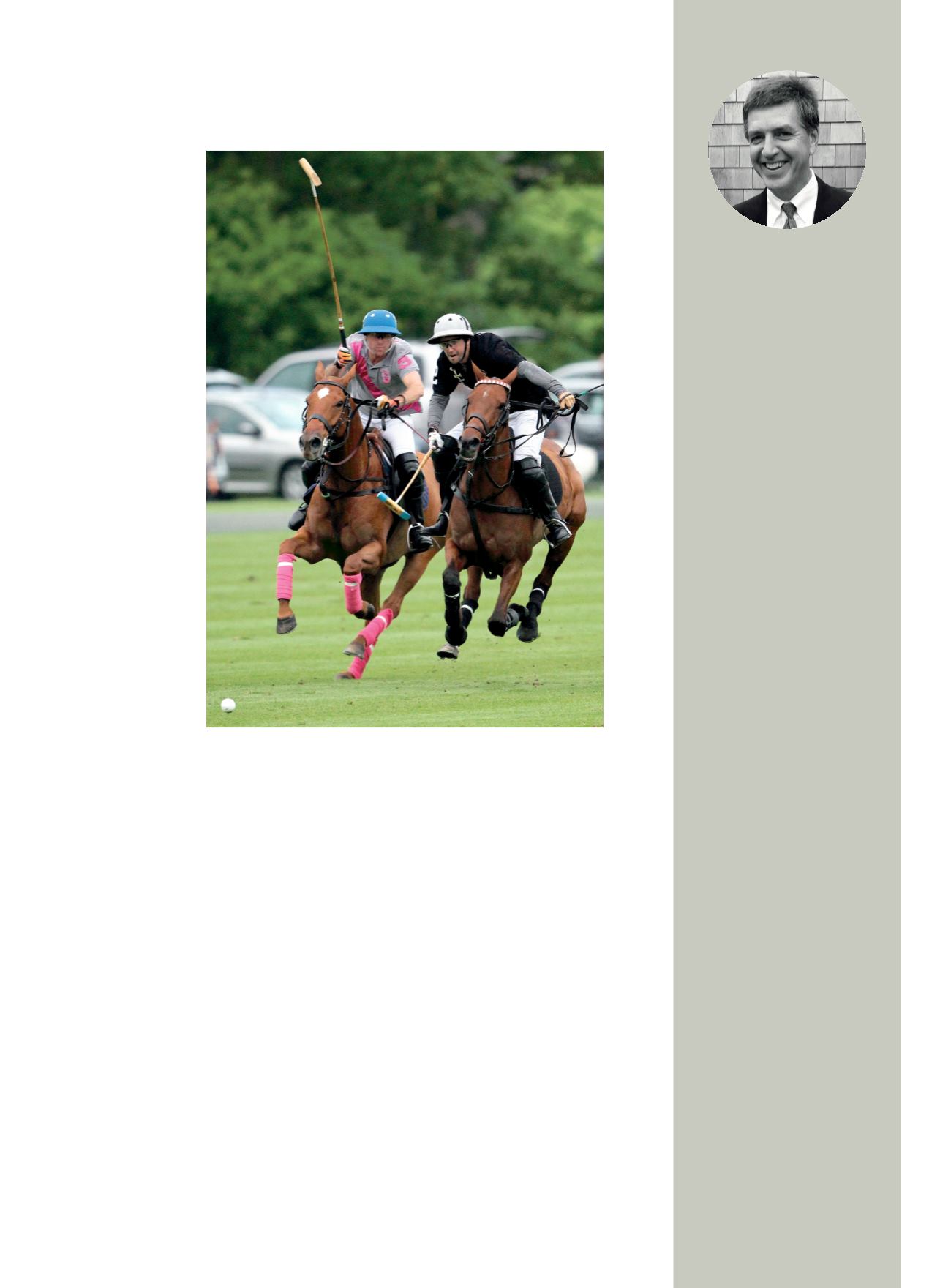
therefore the incomplete and unpredictable
recovery of the nerves.
Following surgery, a combination of
medical therapies is required for nerve cell
maintenance, as well as to augment the
regeneration. This is the future of spinal cord
injury recovery research, and, we believe, the
most promising avenue along which to
pursue better outcomes for patients.
Therefore, the current status of research is
now focused on the development and use of
drugs that both help nerves to grow, and
prevent any inhibition of such growth.
Professor Carlstedt is currently focused
on the development of a drug to assist with
stem cell reimplantation and reconnections
within the spinal cord, as this exciting area
of research has shown great promise. While
the surgical strategy remains the first and
only example of successful spinal cord injury
Previous page:
Diego
Cavanagh back on the
field following spinal
cord surgery
Opposite
:
Professor Hilali
Noordeen playing at the
Ockwells tournament in
2016.
This page
: Diego
Cavanagh (left) chased
by Sapo Caset during
the 2016 Gold Cup
T H E N O G O P R O T E I N :
A N E W H O P E
‘Despite the devastating symptoms
of spinal cord injury, nearly all
nerve cells are still alive,’ says
Dr Stephen Strittmatter (
above
),
professor of neuroscience at Yale
University School of Medicine.
‘Disability results from the
disconnection of nerve fibres,
rather than cell loss. The fibres,
or axons, are the long cellular
extensions that normally send
electrical signals to other cells.’
A research team, led
by Strittmatter, is currently
addressing the problem of axonal
regrowth by asking whether adult
brain axons have simply lost the
ability to grow, or whether the
adult brain contains molecules
that suppress the ability of nerve
fibres to reconnect after injury.
Their work has isolated a protein
called ‘Nogo’ that is present in the
adult brain, which blocks axonal
growth and repair. Nogo is
produced by supporting cells and
stops nerve-fibre repair by binding
to a receptor protein. They have
gone on to demonstrate that mice
lacking Nogo or its receptor
proteins recover more completely
from adult injuries such as stroke
or spinal cord damage. Removing
this inhibitory pathway, therefore,
allows the brain to repair itself by
regrowing its web of impulse-
conducting fibres.
Most critically, the team
has discovered pharmacological
treatments that block this
pathway and improve spinal cord
recovery in laboratory animals,
even when provided long after
trauma. This work holds great
promise as a medical therapy
to alleviate the suffering of
thousands of people with spinal
cord injuries.
For further information about
Dr Strittmatter's research
programme, or to make a donation
towards it, please email
treatments in humans, there is considerable
potential in the development of drugs to
improve the outcome of surgical techniques
and assist in the regenerative process.
Funding is currently being sought in
order to undertake phase II trials of such
medications as they become available. The
development of drugs in the laboratory and
the transition of medication into human
clinical therapy is a long and costly process;
however, the prospective rewards are
immense and could potentially transform the
lives of thousands of spinal cord injury
patients worldwide each year.
Professors Noordeen and Carlstedt are seeking
investment of £10m to fund further research into
spinal cord injury treatments. For further
information, or to make a donation, please
contact:


